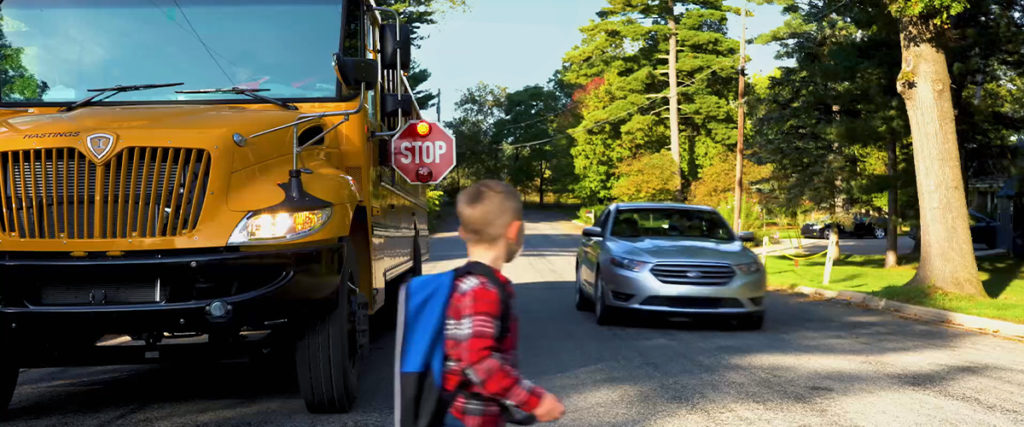Eight Tips for School Bus Stop Safety
After attending the NAPT conference recently in Columbus, Ohio, and specifically the Illegal-Passing Panel Discussion event, I noticed some valuable tips that may be a nice reminder or great new information for the majority of school districts that weren’t represented there. Here are some of the tips I walked away with:
1. Use Curbside Pickup When Necessary
While curbside pickup can be expensive and add precious time to routes, it may be necessary. Do it when a route has a dangerous stop without an adequate nearby area to move to a safe stop. The other condition that factors in is the speed of traffic. Usually only 55 MPH or faster zones would require this. Instead of forcing a child to cross the street or walk a considerable distance on the roadside, curbside pickup may be needed.
2. Evaluate Routes and Run Them Before School Starts and After
I know, most of you do this already, but if not, you should! If you have your drivers run their routes before school starts, they can identify areas of concern to you. When they do that, you can review if a stop needs to be moved or another adjustment needs to be made – like a request for additional road signage. Things like snow, road construction, new building/construction and other changes during the school year can significantly impact a route.

3. Paddles and Driver Responsibility
Programs that require the bus operator to visually check each direction and require passengers to get visual confirmation from the driver before crossing the street can prevent a fatal accident. Districts can implement a paddle system that has a green “go” on one side and a red “stop” on the other, for a visual cue. This will require training with passengers to implement.
4. Speak with Law Enforcement
If a route continually has issues with drivers disobeying traffic laws, contact your local law enforcement agency. They can then patrol the area in question, issue citations and help reduce potential safety issues. A perfect example would be where drivers pass bus stops in hilly areas and wouldn’t have time to stop when significantly exceeding the posted speed limits.
5. Re-Evaluate Old Routes
Just because you’ve ran them for years, doesn’t mean they will be safe. The route from the 2018 Rochester, Indiana, incident where three children were killed by an illegally passing vehicle was ran 18,000 times without incident before the fatal incident happened.
6. Implement a Stop-Arm Camera Program
While some may argue that a camera can’t stop an illegally-passing vehicle, they are wrong. While they may not stop everyone, they can mitigate the number of illegal-passers. The numbers show 99.8% of drivers who receive a ticket for passing a school bus do not repeat the offense. This is backed up by several studies showing drastic reductions in illegally-passing vehicles. One such study completed by Albemarle County Public Schools of Virginia showed there was an 89% reduction in illegally-passing vehicles after stop-arm cameras were implemented. Learn more about our School Bus Stop-Arm Camera Solution. Putting stop-arm camera systems on your buses can help to capture evidence of illegally-passing drivers. (PV photo)
7. Break-up Stops with Lots of Children
Behavior issues tend to be a bigger problem with stops that have more children at them. Breaking them up can help alleviate this safety issue. Also, in rural areas that lack sidewalks and can have snow-narrowed roads, children may be tempted to walk to the stop in the roadway. Obviously, this comes with disadvantages as well like a longer route and further delaying traffic. Consider establishing a minimum distance between stops. Common distances used are one- or two-tenths of a mile.
8. Follow Industry Stop Selection Guidelines
While you likely already have seen these, but there are best practices for stop selection and lists of things to consider when evaluating a stop. Use these tools, since your passenger’s safety depends on it. Here are a few resources:
NHTSA on Bus Stop Selection
https://www.nhtsa.gov/document/selecting-school-bus-stop-locations
NY State Department of Education Guide – “Safe Routes – Safe Stops”
www.p12.nysed.gov/schoolbus/documents/pdf/SafeRoutes_SafeStops.pdf
Safe Routes to School Guide
http://guide.saferoutesinfo.org/school_bus_locations/determining_school_bus_stop_locations.cfm
